Infrared astronomy is a sub-discipline of astronomy which specializes in the observation and analysis of astronomical objects using infrared (IR) radiation. The wavelength of infrared light ranges from 0.75 to 300 micrometers, and falls in between visible radiation, which ranges from 380 to 750 nanometers, and submillimeter waves.
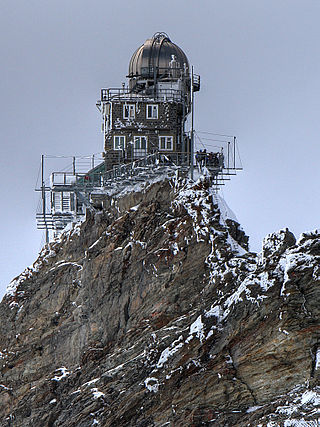
An observatory is a location used for observing terrestrial, marine, or celestial events. Astronomy, climatology/meteorology, geophysics, oceanography and volcanology are examples of disciplines for which observatories have been constructed. Historically, observatories were as simple as containing an astronomical sextant or Stonehenge.
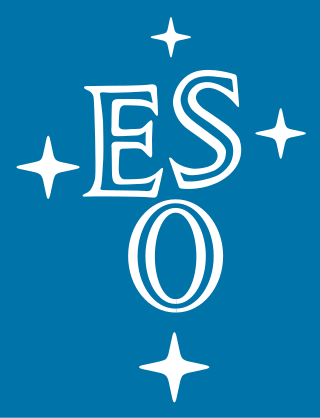
The European Organisation for Astronomical Research in the Southern Hemisphere, commonly referred to as the European Southern Observatory (ESO), is an intergovernmental research organisation made up of 16 member states for ground-based astronomy. Created in 1962, ESO has provided astronomers with state-of-the-art research facilities and access to the southern sky. The organisation employs over 750 staff members and receives annual member state contributions of approximately €162 million. Its observatories are located in northern Chile.

The Mauna Kea Observatories (MKO) are a group of independent astronomical research facilities and large telescope observatories that are located at the summit of Mauna Kea on the Big Island of Hawaiʻi, United States. The facilities are located in a 525-acre (212 ha) special land use zone known as the "Astronomy Precinct", which is located within the 11,228-acre (4,544 ha) Mauna Kea Science Reserve. The Astronomy Precinct was established in 1967 and is located on land protected by the Historical Preservation Act for its significance to Hawaiian culture. The presence and continued construction of telescopes is highly controversial due to Mauna Kea's centrality in native Hawaiian religion and culture, as well as for a variety of environmental reasons.
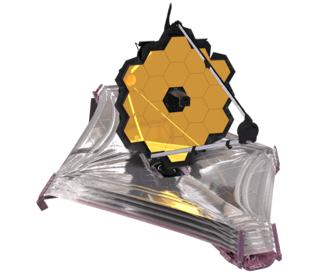
The James Webb Space Telescope (JWST) is a space telescope designed to conduct infrared astronomy. Its high-resolution and high-sensitivity instruments allow it to view objects too old, distant, or faint for the Hubble Space Telescope. This enables investigations across many fields of astronomy and cosmology, such as observation of the first stars and the formation of the first galaxies, and detailed atmospheric characterization of potentially habitable exoplanets.

The Gemini Observatory comprises two 8.1-metre (26.6 ft) telescopes, Gemini North and Gemini South, situated in Hawaii and Chile, respectively. These twin telescopes offer extensive coverage of the northern and southern skies and rank among the most advanced optical/infrared telescopes available to astronomers. (See List of largest optical reflecting telescopes).

The Cerro Tololo Inter-American Observatory (CTIO) is an astronomical observatory located on the summit of Mt.Cerro Tololo in the Coquimbo Region of northern Chile, with additional facilities located on Mt. Cerro Pachón about 10 kilometres (6.2 mi) to the southeast. It is approximately 80 kilometres (50 mi) east of La Serena, where support facilities are located. The site was identified by a team of scientists from Chile and the United States in 1959, and it was selected in 1962. Construction began in 1963 and regular astronomical observations commenced in 1965. Construction of large buildings on Cerro Tololo ended with the completion of the Víctor Blanco Telescope in 1974, but smaller facilities have been built since then. Cerro Pachón is still under development, with two large telescopes inaugurated since 2000, and one in the final stages of construction as of 2023
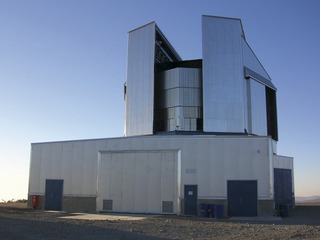
The VISTA is a wide-field reflecting telescope with a 4.1 metre mirror, located at the Paranal Observatory in Chile. It is operated by the European Southern Observatory and started science operations in December 2009. VISTA was conceived and developed by a consortium of universities in the United Kingdom led by Queen Mary University of London and became an in-kind contribution to ESO as part of the UK's accession agreement, with the subscription paid by the UK Science and Technology Facilities Council (STFC).

La Silla Observatory is an astronomical observatory in Chile with three telescopes built and operated by the European Southern Observatory (ESO). Several other telescopes are located at the site and are partly maintained by ESO. The observatory is one of the largest in the Southern Hemisphere and was the first in Chile to be used by ESO.

Paranal Observatory is an astronomical observatory operated by the European Southern Observatory (ESO). It is located in the Atacama Desert of Northern Chile on Cerro Paranal at 2,635 m (8,645 ft) altitude, 120 km (70 mi) south of Antofagasta. By total light-collecting area, it is the largest optical-infrared observatory in the Southern Hemisphere; worldwide, it is second to the Mauna Kea Observatory on Hawaii.
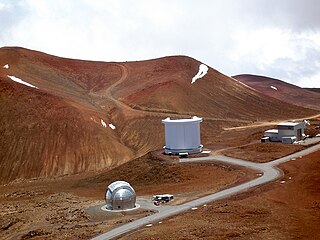
The James Clerk Maxwell Telescope (JCMT) is a submillimetre-wavelength radio telescope at Mauna Kea Observatory in Hawaii, US. The telescope is near the summit of Mauna Kea at 13,425 feet (4,092 m). Its primary mirror is 15 metres across: it is the largest single-dish telescope that operates in submillimetre wavelengths of the electromagnetic spectrum. Scientists use it to study the Solar System, interstellar dust and gas, and distant galaxies.

The Extremely Large Telescope (ELT) is an astronomical observatory under construction. When completed, it will be the world's largest optical/near-infrared extremely large telescope. Part of the European Southern Observatory (ESO) agency, it is located on top of Cerro Armazones in the Atacama Desert of northern Chile.
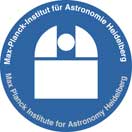
The Max-Planck-Institut für Astronomie is a research institute of the Max Planck Society (MPG). It is located in Heidelberg, Baden-Württemberg, Germany near the top of the Königstuhl, adjacent to the historic Landessternwarte Heidelberg-Königstuhl astronomical observatory. The institute primarily conducts basic research in the natural sciences in the field of astronomy.

The Royal Observatory, Edinburgh (ROE) is an astronomical institution located on Blackford Hill in Edinburgh. The site is owned by the Science and Technology Facilities Council (STFC). The ROE comprises the UK Astronomy Technology Centre (UK ATC) of STFC, the Institute for Astronomy of the School of Physics and Astronomy of the University of Edinburgh, and the ROE Visitor Centre.

A multi-object spectrometer is a type of optical spectrometer capable of simultaneously acquiring the spectra of multiple separate objects in its field of view. It is used in astronomical spectroscopy and is related to long-slit spectroscopy. This technique became available in the 1980s.

An extremely large telescope (ELT) is an astronomical observatory featuring an optical telescope with an aperture for its primary mirror from 20 metres up to 100 metres across, when discussing reflecting telescopes of optical wavelengths including ultraviolet (UV), visible, and near infrared wavelengths. Among many planned capabilities, extremely large telescopes are planned to increase the chance of finding Earth-like planets around other stars. Telescopes for radio wavelengths can be much bigger physically, such as the 300 metres aperture fixed focus radio telescope of the Arecibo Observatory. Freely steerable radio telescopes with diameters up to 100 metres have been in operation since the 1970s.

In 2011, Chile was home to 42% of the world's astronomical infrastructure, consisting principally of telescopes. In 2015, it was estimated that Chile would contain more than 50% of the global astronomical infrastructure by 2030. In the Atacama desert region of northern Chile, the skies are exceptionally clear and dry for more than 300 days of the year. These conditions have attracted the world's scientific community to develop highly ambitious astronomical projects in the Atacama desert.

Charles Mattias ("Matt") Mountain is currently the President of the Association of Universities for Research in Astronomy (AURA) which designs, builds, and operates telescopes and observatories for the National Science Foundation (NSF) and the National Aeronautics and Space Administration (NASA). AURA's NASA center is the Space Telescope Science Institute (STScI), responsible for the science mission for the Hubble Space Telescope, the science and operations for the James Webb Space Telescope, and the MAST data archive. AURA's NSF centers are Gemini Observatory, the National Optical Astronomy Observatory (NOAO), and the National Solar Observatory (NSO). Dr. Mountain and AURA are also responsible for the NSF construction projects: the Daniel K. Inouye Solar Telescope (DKIST) on Haleakalā, Hawaii and the Large Synoptic Survey Telescope (LSST) on Cerro Pachón in Chile.
Gillian Susan Wright is a Scottish astronomer who is currently the director of the UK Astronomy Technology Centre in Edinburgh, UK. She has also been involved in the development and construction of the James Webb Space Telescope as the European Principal Investigator for the Mid-Infrared Instrument (MIRI). In 2006 Wright was appointed MBE for services to science.
Timothy George Hawarden was a South African astrophysicist known for his pioneering work on passive cooling techniques for space telescopes for which he won NASA's Exceptional Technology Achievement Medal.




















